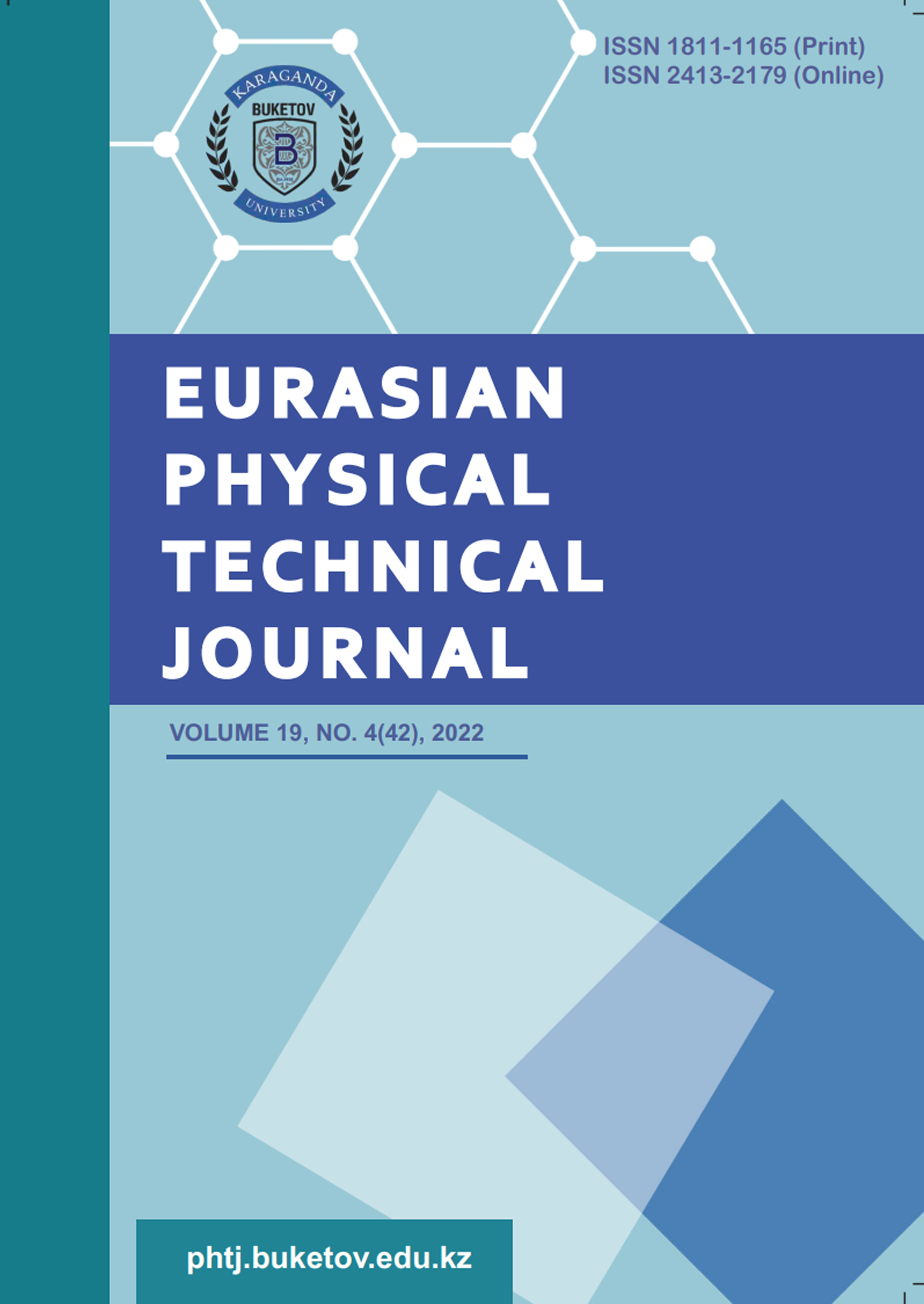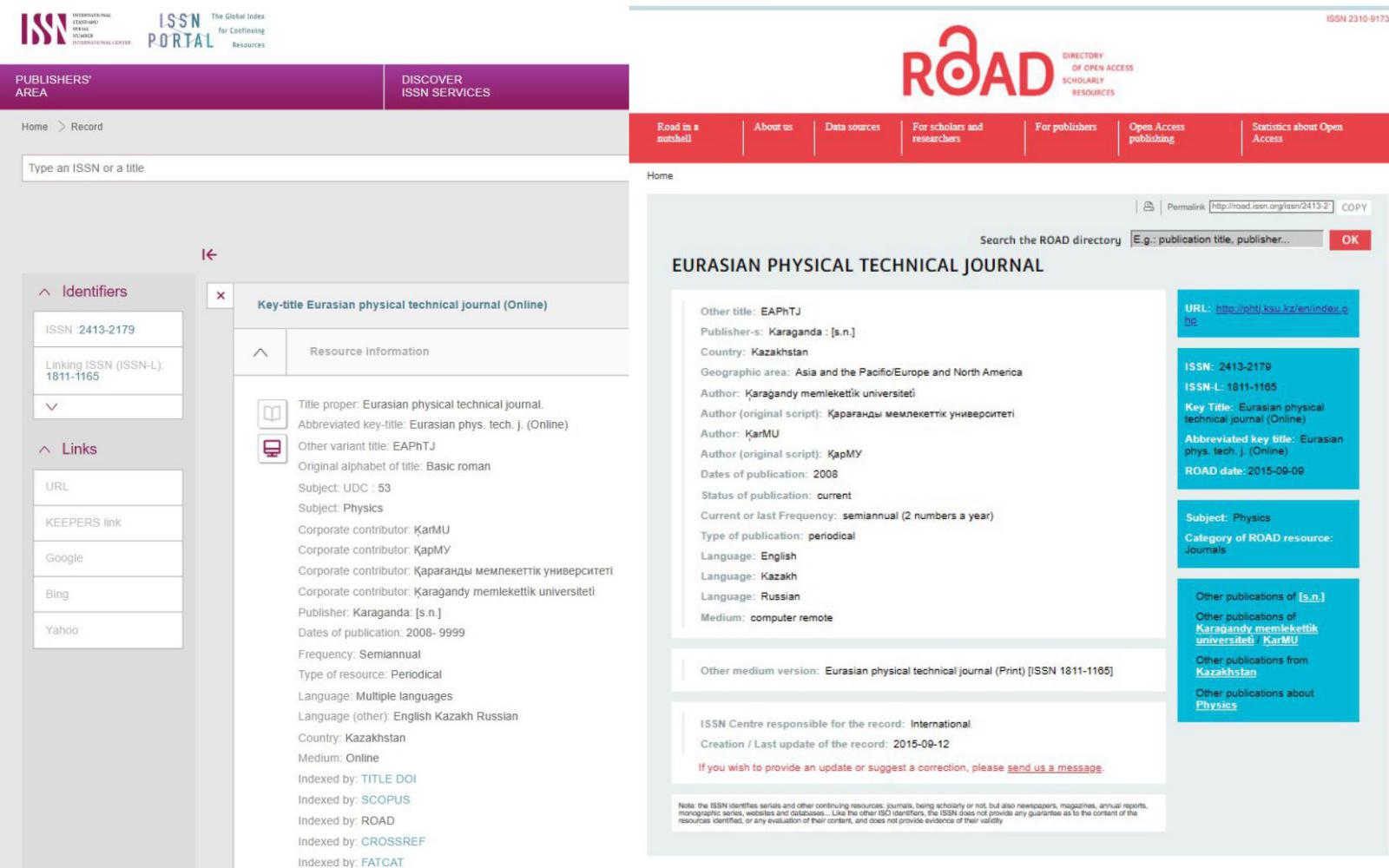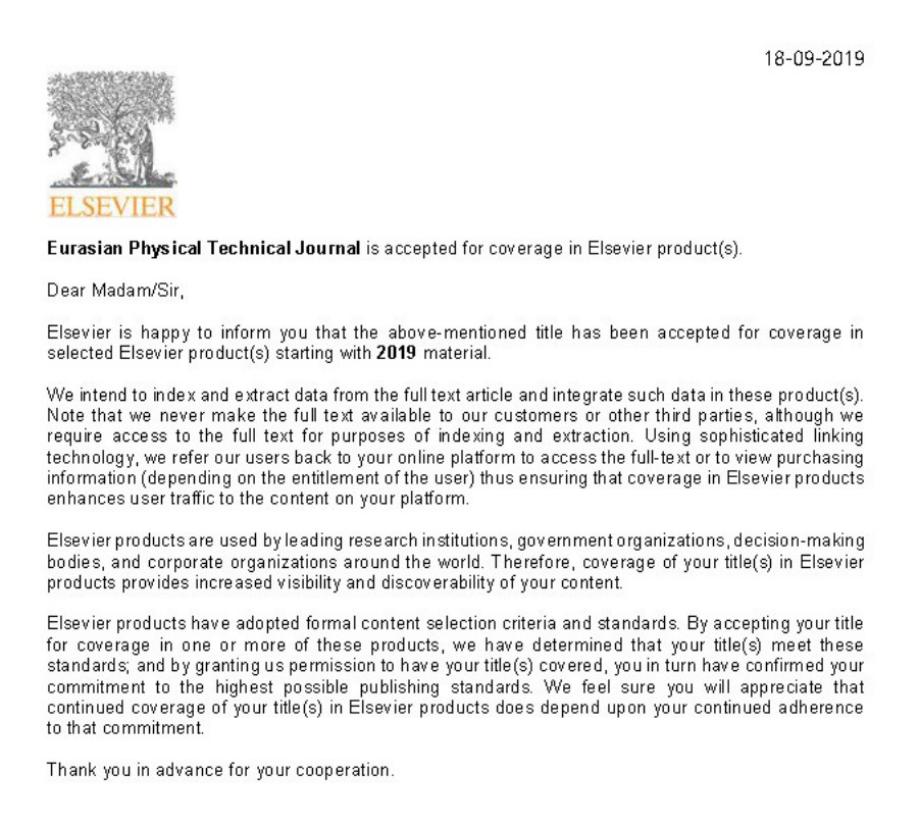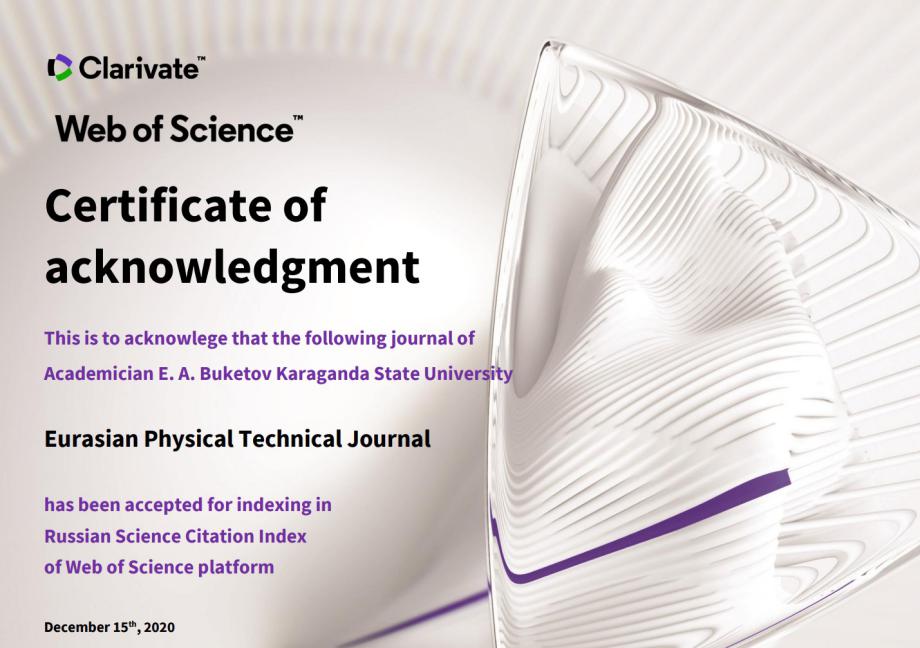TESTING OF DIFFERENT MATERIAL TYPE PHOTOELECTRIC BATTERY AND PHOTOTHERMAL BATTERIES COMPOSED
DOI:
https://doi.org/10.31489/2022No4/44-50Keywords:
monocrystal, polycrystal, photothermal, mobile device, heat collector, cellular polycarbonate, open circuit voltage, short circuit currentAbstract
In the world, over the years, the use of hydrocarbon resources is decreasing, and their place is being replaced by ecologically clean alternative and renewable energy sources. Therefore, the world is paying a lot of attention to improved devices based on photoelectric batteries. Conducting targeted scientific research in this direction is one of the urgent issues of the present time. This article presents the results of comparing the electrical parameters of photovoltaic and photothermal batteries based on them in natural conditions. The experiments were carried out on three traditional photoelectric batteries with different materials and constructions, as well as photothermal batteries made on their basis. All batteries are installed in a mobile structure, and two planes (reflectors) that reflect sunlight are installed along the long side of the device connecting the batteries. In the same conditions, the intensity of solar radiation is increased with the help of reflectors that return light to photoelectric and photothermal batteries. On the front surface of the photovoltaic batteries, a vertical (90) fall of the sun's rays is provided. As a result, their electrical parameters changed to different values depending on the type of material and construction. Compared to traditional photoelectric batteries, photothermal batteries produced 1.3-1.4 times more electricity depending on the type of material. In the results of the experiment, data were obtained on the open circuit voltage, short circuit current and power of photoelectric and photothermal batteries in hot climate conditions. According to results, the high indicators in terms of electrical parameters are monocrystalline photoelectric and photothermal batteries based on them.
References
"1 Tursunov M.N., et al. Improving the efficiency of a photothermal conversion unit. Solar engineering, 2014, No. 4, pp. 84 – 86. [ in Russian]
Tursunov M.N., et al. Photothermoelectric batteries based on silicon solar cells. Geliotekhnika, 2011, No. 1, pp. 72 – 75. [ in Russian]
Akhatov J.S., et al. Experimental Investigations on PV-T collector under natural condition of Tashkent. Energy Procedia, 2013, No. 39, pp. 2327 – 2336.
Chow T.T. A review of photovoltaic/thermal hybrid solar technology. Applied Energy, 2010, Vol. 87, Issue 2, pp. 365 – 379. doi:10.1016/j.apenergy.2009.06.037
Sandnes B.A., et al. Photovoltaic/thermal (PV/T) collector with a polymer absorber plate: experimental study and analytic model. Solar Energy, 2002, No. 72. pp. 63 – 73. doi:10.1016/S0038-092X(01)00091-3.
Hallmark B., et al. The application of plastic micro capillary films for fast transient micro-heat exchange. International Journal of Heat and Mass Transfer, 2008, No. 51. pp. 5344 – 5358. doi:10.1016/j.ijheatmass transfer.2008.01.036
Mabrouk A., et al. Comparative performance evaluation of different photovoltaic modules technologies under Kuwait harsh climatic conditions. Energy Reports, 2020, Vol. 6, pp. 2689 – 2696. doi: 10.1016/j.egyr.2020.09.034
Mosalam M.A., et al. Determination of suitable types of solar cells for optimal outdoor performance in desert climate. Renewable Energy, 2000, Vol. 19, Issues 2, pp. 71–74. doi: 10.1016/S0960-1481(99)00018-X
Erdem E., et al. Outdoor performance analysis of different PV panel types. Renewable and Sustainable Energy Reviews, 2017, Vol. 67, pp. 651 – 661. doi: 10.1016/j.rser.2016.09.051
Omar I.N., et al. Outdoor performance analysis of different PV technologies under hot semi-arid climate. Energy Reports, 2020, Vol. 6, pp. 36 – 48. doi:10.1016/j.egyr.2020.08.023
Visa I., et al. Comparative analysis of the infield response of five types of photovoltaic modules. Renewable Energy, 2016, Vol. 95, pp. 178 – 190. doi: 10.1016/j.renene.2016.04.003
Lontsi K.A., et al. Experimental study on the electrical and thermal characteristics of a hybrid photovoltaic /thermal water solar collector model using photovoltaic solar modules of different brands. Energy Conversion and Management, 2022, Vol, 14, pp. 100198. doi: 10.1016/j.ecmx.2022.100198
Ben Z.S., et al. Hybridization of Taguchi method and genetic algorithm to optimize a PVT in different Moroccan climatic zones. Energy, 2022, Vol. 250, No. 123802. doi: org/10.1016/j.energy.2022.123802
Muminov R.A., et al. Study of the influence of temperature on the parameters of photothermal batteries in the southern regions of the republic. Alternative energy and ecology, 2021, No.25, pp. 40 – 47. [in Russian]. doi: 10.1551 8 /isjaee.2021.09.040-047
Saeed A.G., et al. Investigation of solar photovoltaic-thermal (PVT) and solar photovoltaic (PV) performance: A case study in Ghana. Energies, 2020, Vol. 13, pp. 2701. doi: 10.3390/en13112701 "













